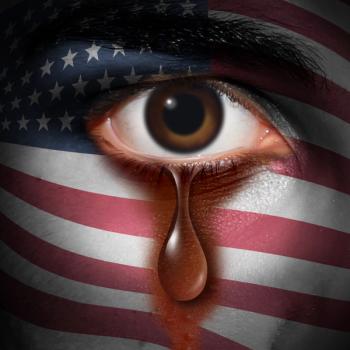
ICD-10 and the Diagnosis of Racism
Should racism be considered a psychiatric disorder?
PSYCHIATRIC VIEWS ON THE NEWS
Habits of thought reinforce and sustain the habits of power . . .
–James Baldwin
Both the victims and perpetrators of racism have a controversial history in psychiatric diagnosis. After last week’s blog on
Racism entered the diagnostic nomenclature in reverse. It started with diagnosing the victims of slavery in the US. In 1851, Samuel A. Cartwright, a Louisiana surgeon and psychologist, published a report in the New Orleans Medical and Surgical Journal on what he deemed to be common diseases among black people in the South.1 One of them was drapetomania, described as “the disease causing slaves to run away.” The treatment was obvious, was it not? Dr Cartwright added the usefulness of proper medical advice as a preventive measure. In a terrible irony, his advice made some sense, for if a runaway slave was caught, he would be beaten and/or lynched.
In order to put American psychiatry and diagnostic considerations in a cultural context, past and present, drapetomania was our point of departure in our model curriculum for teaching psychiatric residents about cultural psychiatry at Baylor College of Medicine and the Medical College of Wisconsin. This diagnosis seemed to dissipate after slavery ended with the trauma of the Civil War.
A later version emerged during the period of the Civil Rights Movement. Some doctors began to diagnose Black-Americans in the South who were advocating for civil rights with a subtype of schizophrenia, characterized as having a desire to advocate for their rights.2 The treatment, reminiscent of Soviet Union tactics at the time, was involuntary hospitalization.
As a countermeasure and corrective reaction, after several racial killings, a group of Black psychiatrists sought to classify extreme bigotry as a mental disorder.3 Others felt that it was at best premature to establish a
We may now have ICD-10 to the rescue . . . sort of. ICD is the International Classification of Diseases. While psychiatrists in the US use DSM-5 to make a diagnosis, that is translated for billing purposes into an ICD code. Although many European countries have been using ICD-10 for many years, the US has kept delaying and continuing to use ICD-9. At the time of this writing, the use of ICD-10 is on course to begin October 1, 2015.
In a category which seems in-between normality and disease, ICD-10 Z codes are “factors influencing health status and contact with health centers.” Though conceptually akin to DSM “V codes,” Z codes in ICD-10 have different definitions and implications. Z 55 - 65 covers “Persons with potential health hazards related to socioeconomic and psychosocial circumstances.”
Here, for instance, we have Z 62, “Problems related to social upbringing.” Teaching and modeling racist attitudes to children can continue in the unconscious, as affirmed by Implicit Bias psychological tests.5 Perhaps there is even a Jungian collective unconscious legacy from the draptetomania slave patrols to some of our current police behavior.
We also have Z 60 and Z 64, “Problems related to social environment and psychosocial circumstances,” respectively. Would not racism be an example of such a problem? In fact, such a description could fit both perpetrators and victims of racism, could it not?
How to treat this problem is a further challenge. We do not have treatment manuals to complement our diagnostic manuals. One model might be the social contagion of the so-called Butterfly Effect.
Originally, this effect theorized how the flapping of a butterfly’s wings in Mexico might influence the weather in, say, China. Recently, an example of the social Butterfly Effect was shown on the Sunday Morning TV show on March 15th, the Ides of March. Chris Durham, suffering with severe ALS, to test that theory, gave $50 to 2 young girls in a restaurant. His only instruction was to do something good or kind with the money. Later he
The day before that, my wife and I, along with 2 close friends visiting from St. Louis, had a butterfly experience in reverse. During a picnic in a public space in Chicago, a Black police officer approached us. Kindly, he said having this bottle of wine and drinking it in this public space was not allowed. We should put the bottle away and quickly drink the wine in our glasses. Were all police so kind in such circumstances, including White police officers addressing Black citizens.
Mr Durham is planning to distribute more $50 butterflies. I am thinking of how to continue to honor that policeman, beyond this blog. May more of us become such butterflies.
Disclosures:
Note to readers: As with all of our blogs, the opinions expressed in this commentary are solely those of the author. Comments not followed by full names and academic titles will either be removed or heavily monitored. –Psychiatric Times
References:
1. Cartwright S. Report of the diseases and peculiarities of the Negro Race. New Orleans Med Surg J. 1851;691-715.
2. Metzl JM. The Protest Psychosis: How Schizophrenia Became a Black Disease. Boston: Beacon Press; 2011.
3. Bell C. Racism: a mental illness? Psychiatr Serv. 2004;55:1343.
4. Pies R. Is bigotry a mental illness? Psychiatric Times. 2007; May 1.
5. Sriram N, Greenwald A. The Brief Implicit Association Test. Exp Psychol. 2009;5:283-294.
Newsletter
Receive trusted psychiatric news, expert analysis, and clinical insights — subscribe today to support your practice and your patients.













